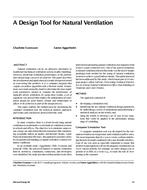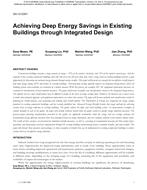The air velocity profiles around the human body were mapped at six selected sites – head, chest, upper arm, lower arm, thigh, and lower leg – using omnidirectional anemometers in an environmental chamber with precise air flow control. Two manikins, one standing and one sitting, were used to represent the anthropometric features and contour of the human body. It was found that the air velocity profiles around each of the six sites displayed complex patterns. Furthermore, the profiles around the limbs were asymmetrical. The commonly used points of measuring the regional air velocities, such as the frontal stagnation and the right/left side streaming positions, were inadequate choices. Indeed, no single measurement position can be described as a good choice. The complex air velocity variations around the human body cannot be quantified by monitoring with a single anemometer. Only through elaborate mapping, such as the method employed in this study, can the air velocity profiles be described. The chamber’s free stream air velocity did not match any of the regional air velocities. However, it was found that the free stream air velocity was an acceptable estimate of the overall body mean air velocity in both the standing and sitting manikin.
KEYWORDS: air flow, human body, climate chambers, manikins, measuring, anemometers, mapping.
Citation: ASHRAE Transactions 1993, Vol.99, pt.1
Product Details
- Published:
- 1993
- Number of Pages:
- 9
- File Size:
- 1 file , 1.1 MB
- Product Code(s):
- D-18110


